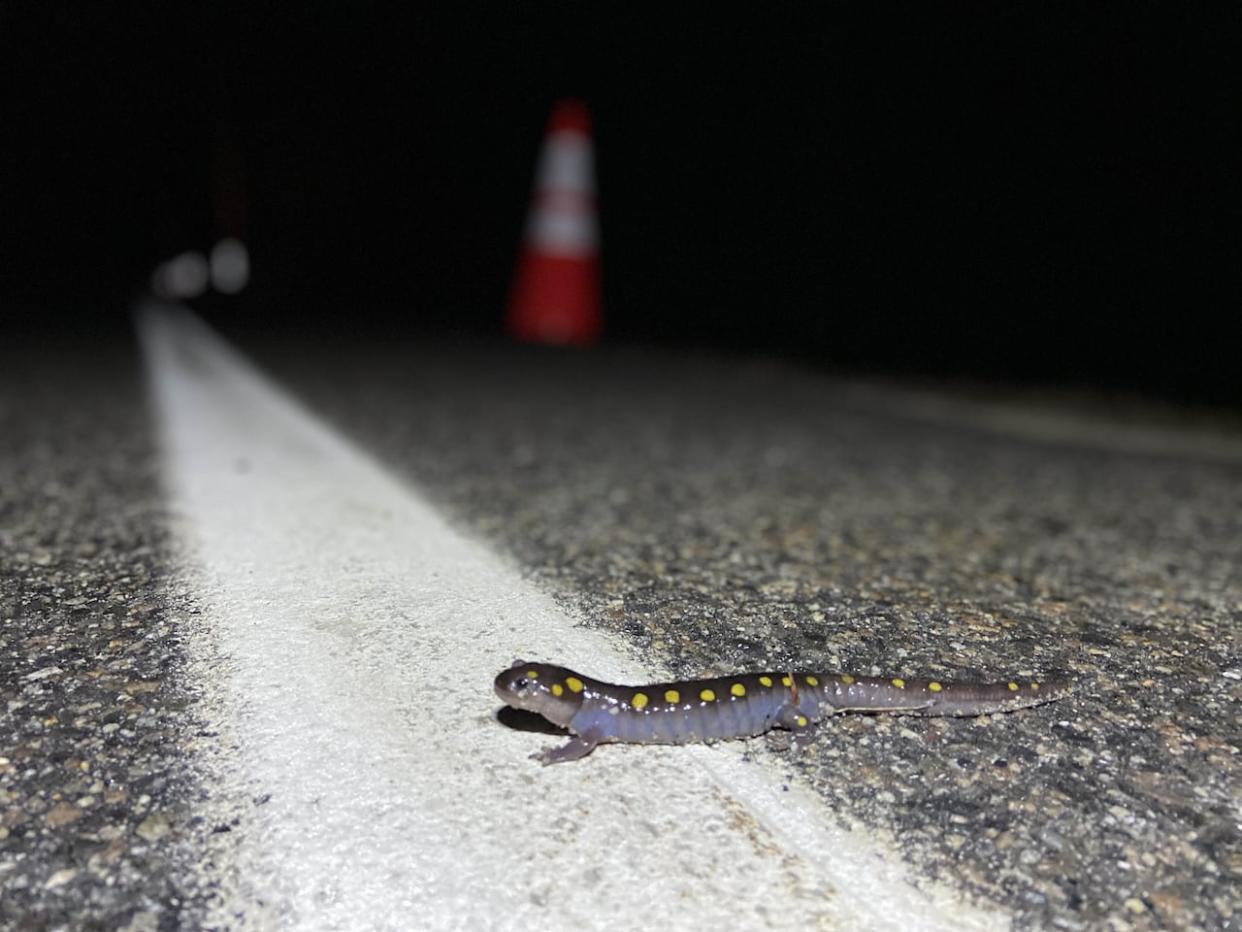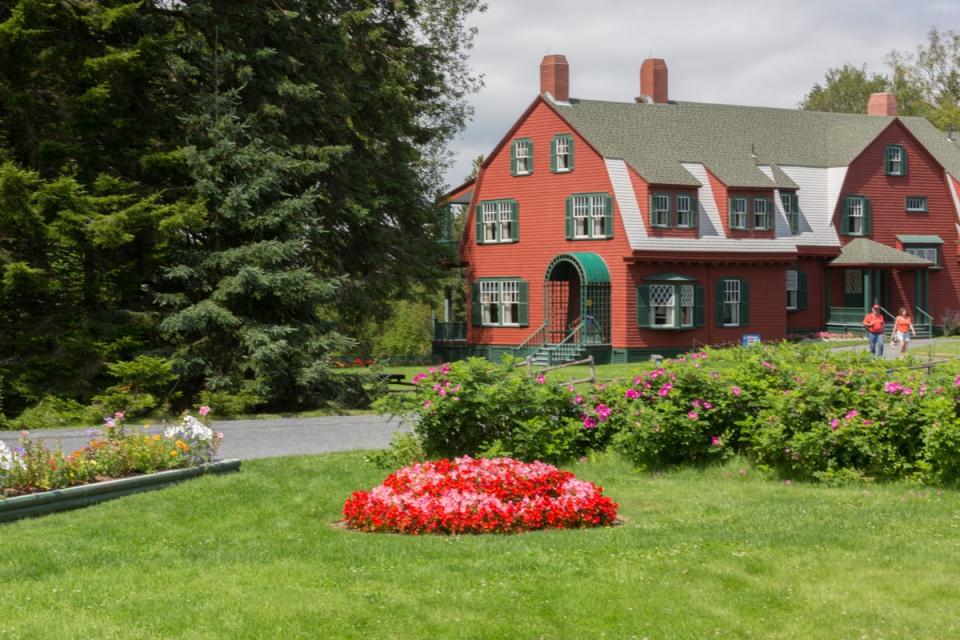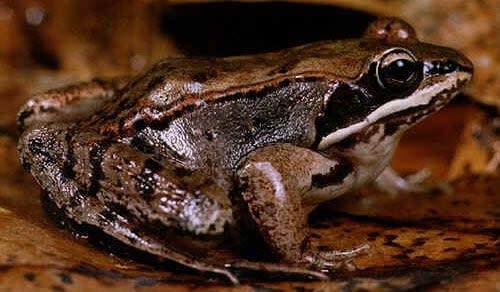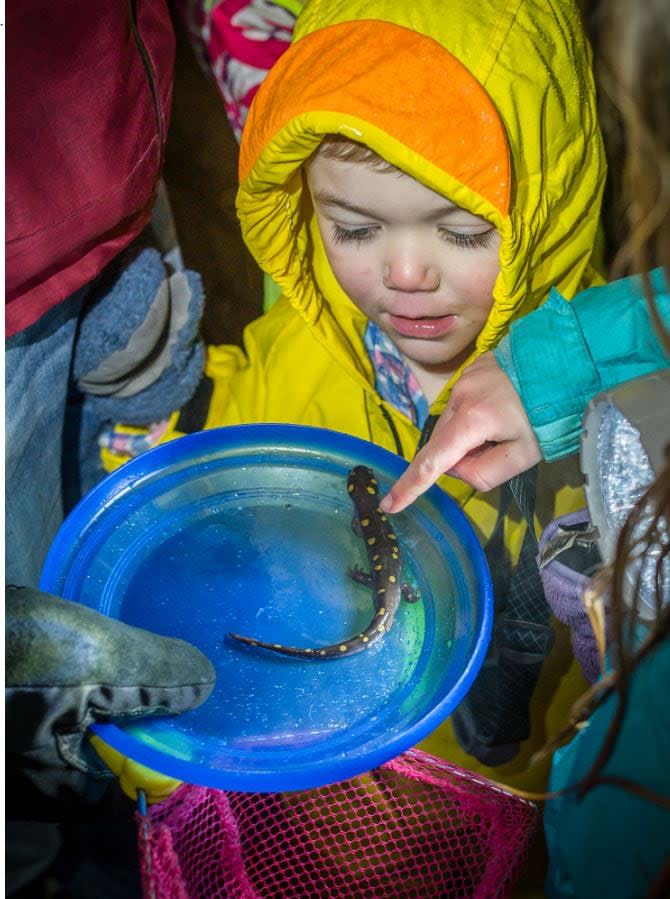The stage is set for an amphibian stampede on Campobello Island

All it takes is one perfect spring night.
The temperature hovers around a hospitable 5 C, perhaps with some light rain to sweeten the deal.
"That is a cue for amphibians that live in vernal pools that is time for them to make their big move out of the vernal pool into the broader forest environment," said Pete Coleman in an interview with Information Morning Saint John.
Coleman is with Roosevelt Campobello International Park on Campobello Island, N.B., which is preparing for its second annual so-called "Big Night" of amphibian migration.
Roads through the 2,800 acre park will be temporarily closed in order to keep the frogs and salamanders safe on their journey.

Roosevelt Campobello International Park is famous for the summer home of Franklin D. Roosevelt, the former U.S. president. But it's also holding an annual Big Night to help protect amphibians crossing the road. (Submitted by Roosevelt Campobello International Park)
Wood frogs, spotted salamanders, and blue spotted salamanders are some of the species that partake in the great migration every spring, Coleman said.
Vernal pools are temporary wetlands that form in the woods when snow melts and spring rains begin. Coleman said they're the perfect environments for these small creatures because there is no flowing water and no other predators living in them, making for an ideal nursery to lay eggs in.
"They all share their origins in these specialized conditions that the murky bottom of a vernal pool, because of the leaf litter, allows for."
But when that perfect night arrives, the frogs and salamanders are on the move.

Wood frogs are one of the species that will be on the move during the Big Night on Campobello. (Janet M. Storey)
And a desire to protect them is what inspired the Big Night event in the park.
"It was just easier to take a blanket approach as a safety measure and just close access for one hour before sunset and one hour after sunrise to allow these creatures to migrate across the road," Coleman said.
Once they leave the pools, the amphibians can travel large distances relative to their size.
"They can travel up to 3,000 feet, depending on the species," Coleman said, "And that may not seem like a lot, but if you're looking at a creature that's only a few inches long, 3,000 feet is quite an undertaking."
He said it's hard to tell how many vernal pools exist in the park due to their temporary nature, but the park is working on mapping locations so they have a better idea going forward.
Big night is a big deal in Maine
But while Big Night programming is relatively new on Campobello Island, it's a springtime favourite in neighbouring Maine.
Sally Stockwell is the director of conservation with the Maine Audubon, and said there are Big Night events organized in many communities across the state each spring.
"It's really a magical moment because you get all these people out in the dark, in the rain, and there's this incredible phenomenon happening that most people have no idea is actually happening because they're back in their homes and they're not paying attention," Stockwell said.

Sally Stockwell with Maine Audubon says there are Big Night events across the state each spring and volunteers love to participate. (Submitted by Sally Stockwell)
"The kids love it. I mean, they're just so excited," Stockwell said of a Big Night she helped facilitate last week in Cumberland, Me. in partnership with the Chebeague and Cumberland Land Trust.
Volunteers are given flashlights, safety vests and containers to help the amphibians cross the road if needed.
"And usually they're pretty sluggish. They're moving pretty slowly because it's not that warm."
Local police are even stationed nearby to slow or halt traffic.
She said the Big Night in Cumberland has gotten so popular it's almost become chaotic, with around 75 people participating this year, that next year the land trust is planning to assign people time slots to help the amphibians cross the road.

A young volunteer helps a salamander across the road during the Big Night event in Cumberland, Maine. (Submitted by Chebeague and Cumberland Land Trust)
But a Big Night is hard to predict, Stockwell said, and sometimes it doesn't even happen.
"Sometimes the critters come out of the forest and move across the roads in a series of evenings, and sometimes they are all out there the same night, which is where that 'big night' concept kind of comes from," she said.
Volunteers head out into the woods to observe and listen when the Audubon suspects a Big Night might be near, and the organization starts getting calls from people around the state when it does.
"I think it's just a great community activity. So the more you can get people out there, the better."


